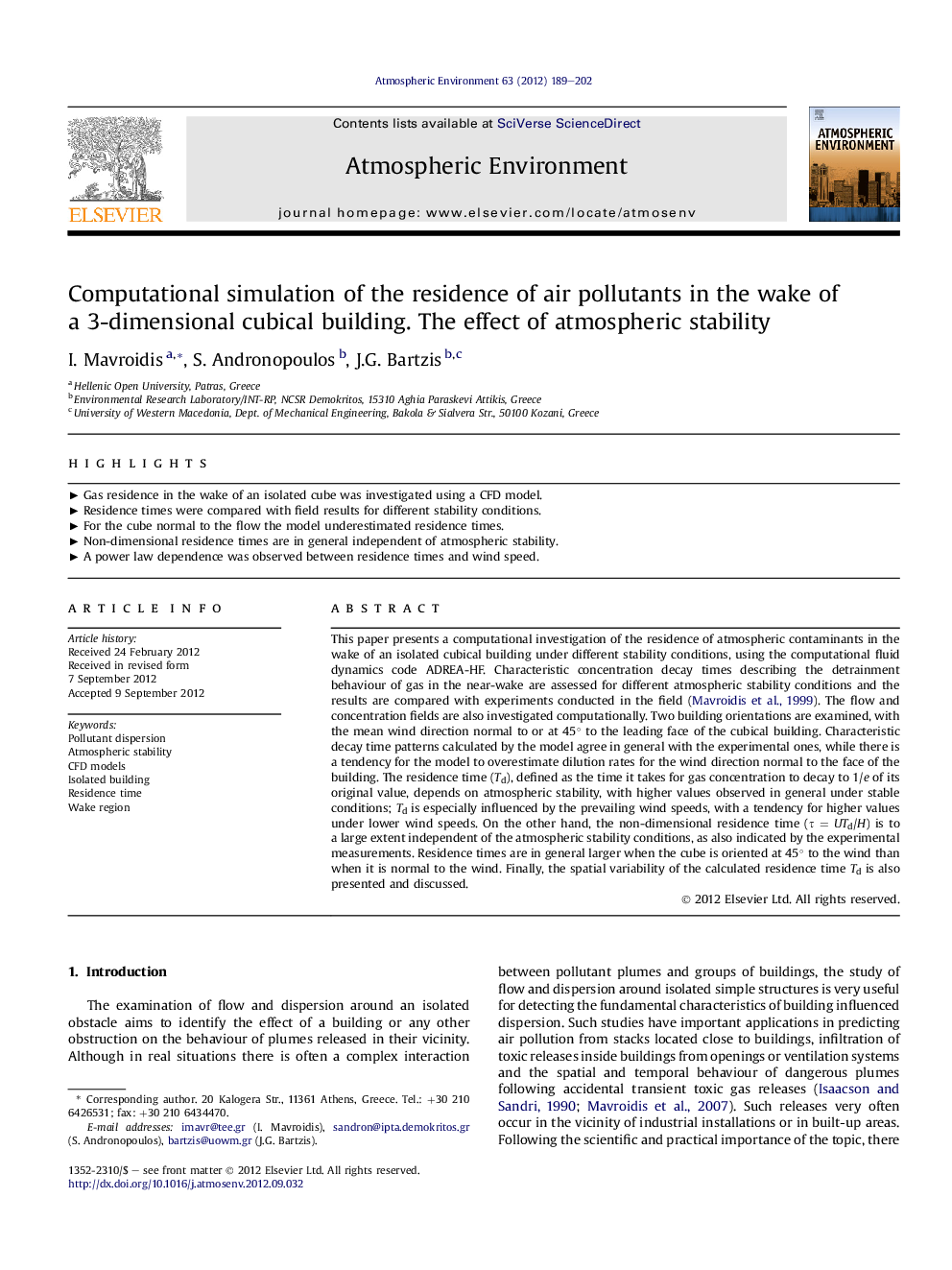| Article ID | Journal | Published Year | Pages | File Type |
|---|---|---|---|---|
| 4438611 | Atmospheric Environment | 2012 | 14 Pages |
This paper presents a computational investigation of the residence of atmospheric contaminants in the wake of an isolated cubical building under different stability conditions, using the computational fluid dynamics code ADREA-HF. Characteristic concentration decay times describing the detrainment behaviour of gas in the near-wake are assessed for different atmospheric stability conditions and the results are compared with experiments conducted in the field (Mavroidis et al., 1999). The flow and concentration fields are also investigated computationally. Two building orientations are examined, with the mean wind direction normal to or at 45° to the leading face of the cubical building. Characteristic decay time patterns calculated by the model agree in general with the experimental ones, while there is a tendency for the model to overestimate dilution rates for the wind direction normal to the face of the building. The residence time (Td), defined as the time it takes for gas concentration to decay to 1/e of its original value, depends on atmospheric stability, with higher values observed in general under stable conditions; Td is especially influenced by the prevailing wind speeds, with a tendency for higher values under lower wind speeds. On the other hand, the non-dimensional residence time (τ = UTd/H) is to a large extent independent of the atmospheric stability conditions, as also indicated by the experimental measurements. Residence times are in general larger when the cube is oriented at 45° to the wind than when it is normal to the wind. Finally, the spatial variability of the calculated residence time Td is also presented and discussed.
► Gas residence in the wake of an isolated cube was investigated using a CFD model. ► Residence times were compared with field results for different stability conditions. ► For the cube normal to the flow the model underestimated residence times. ► Non-dimensional residence times are in general independent of atmospheric stability. ► A power law dependence was observed between residence times and wind speed.
